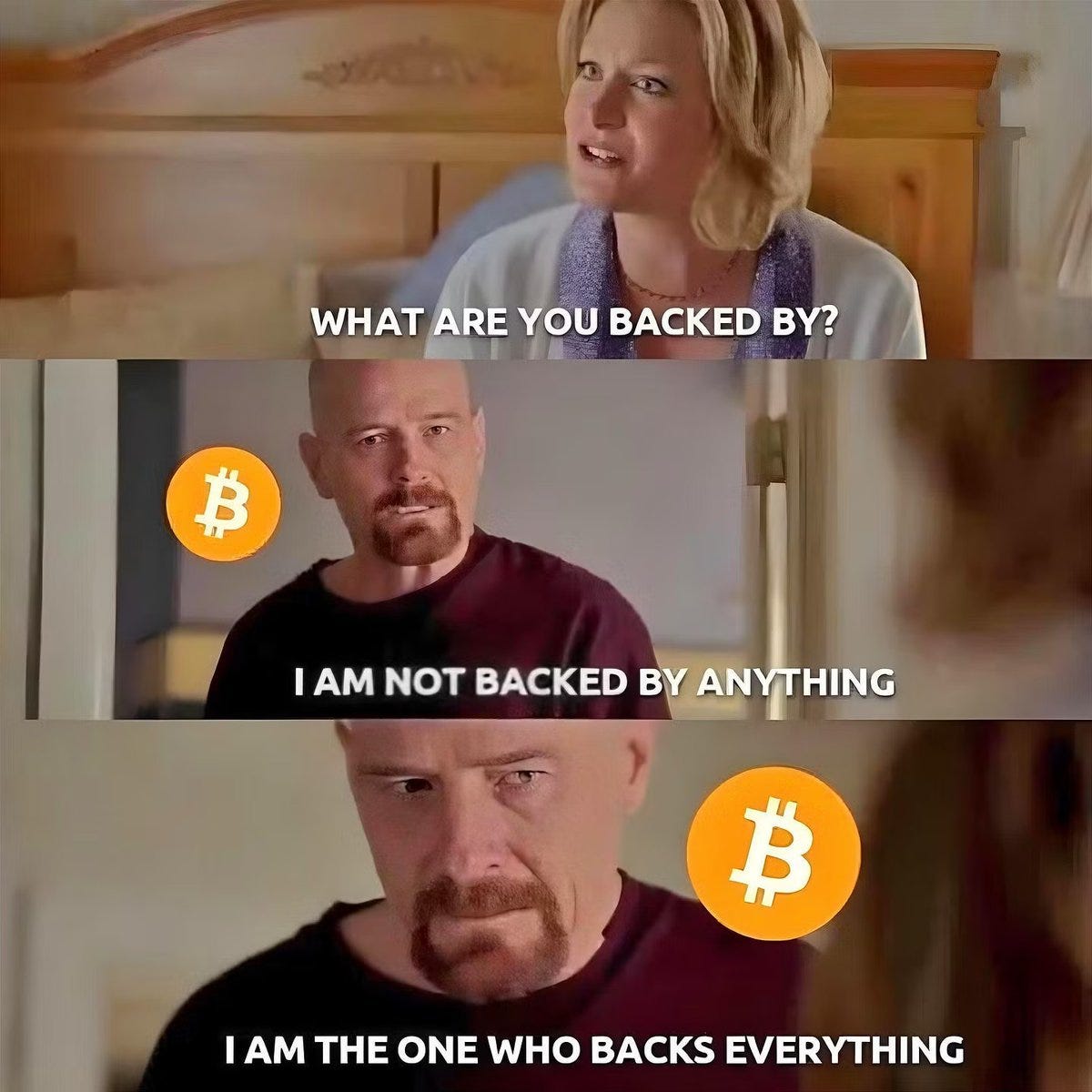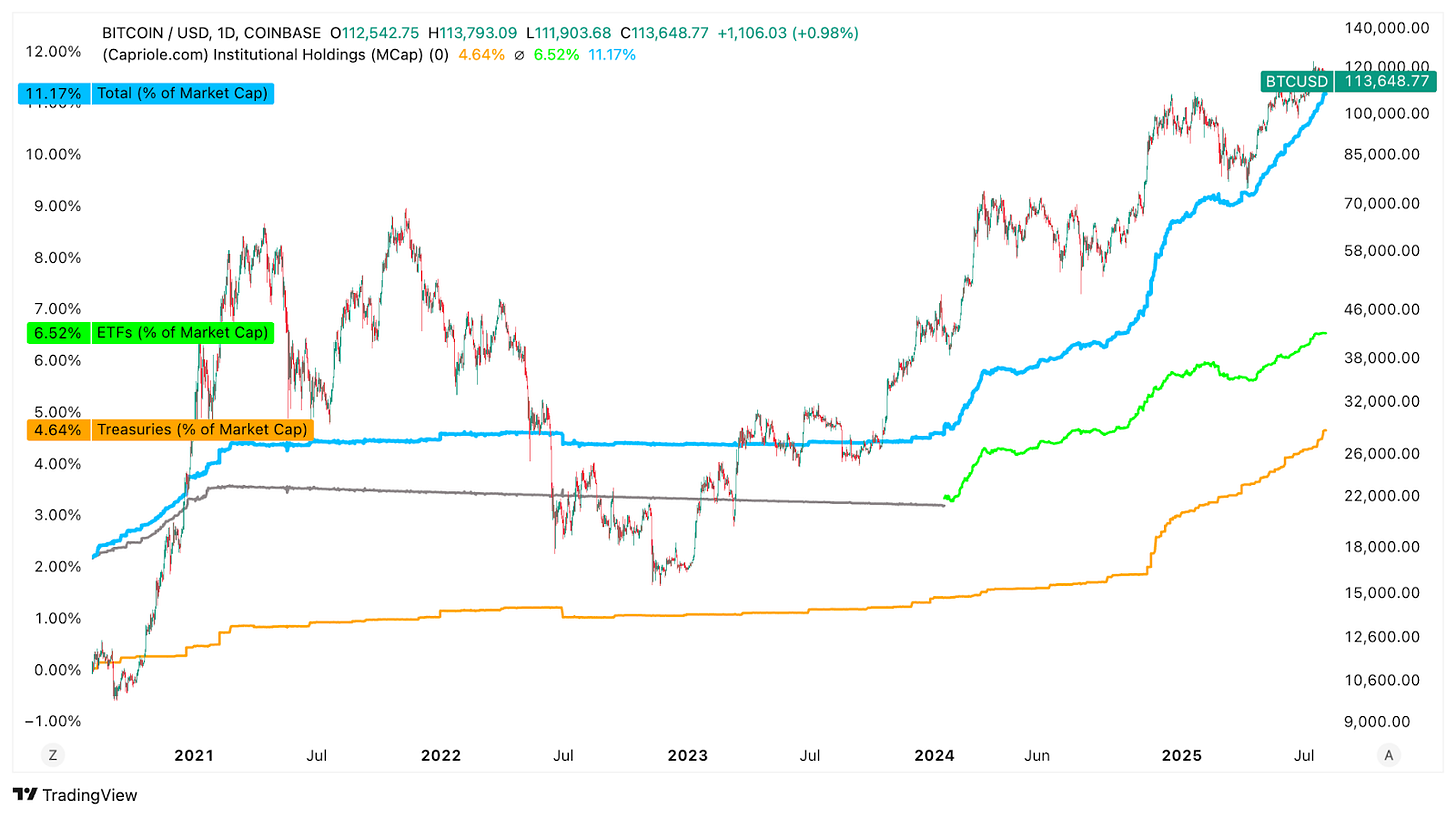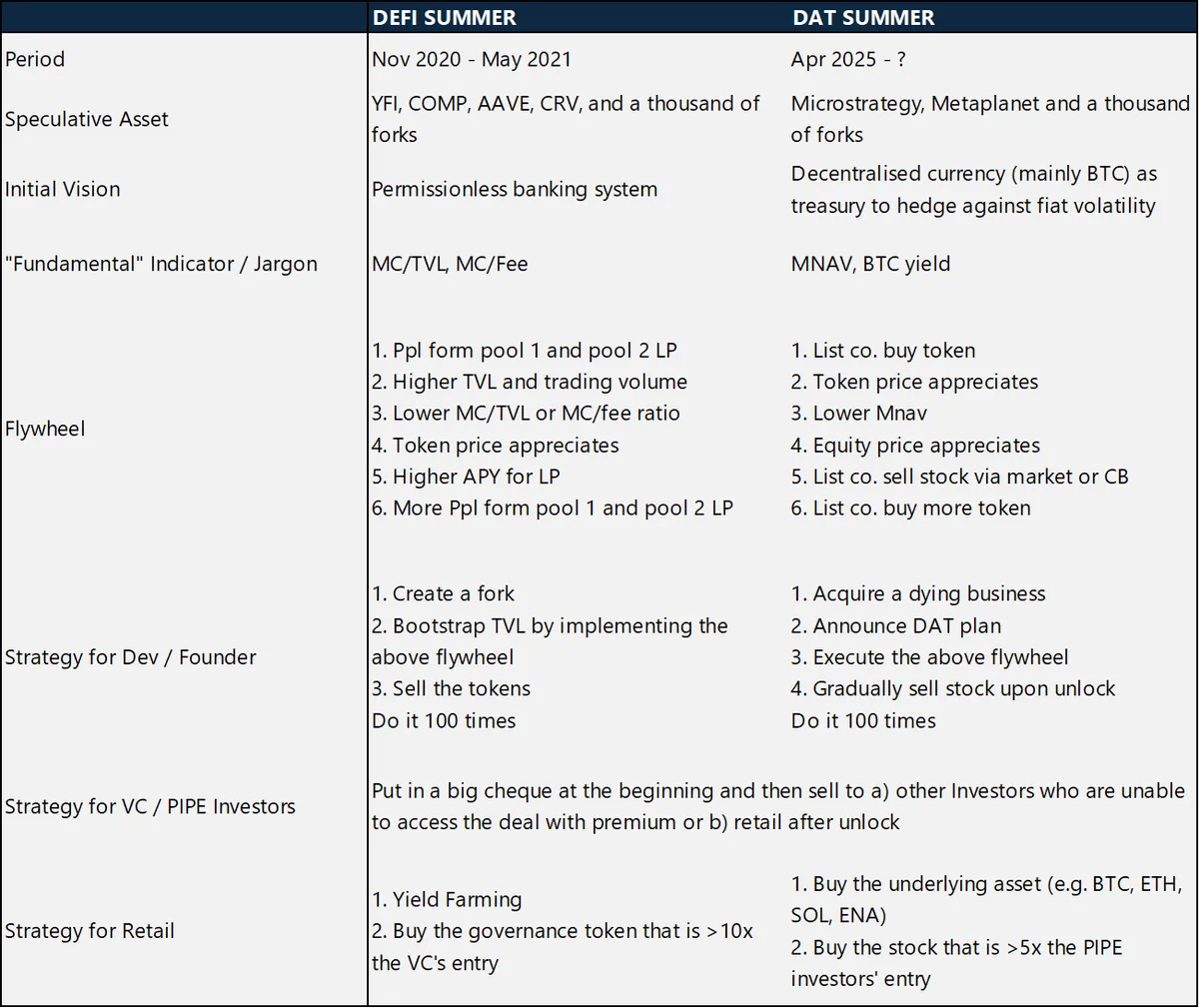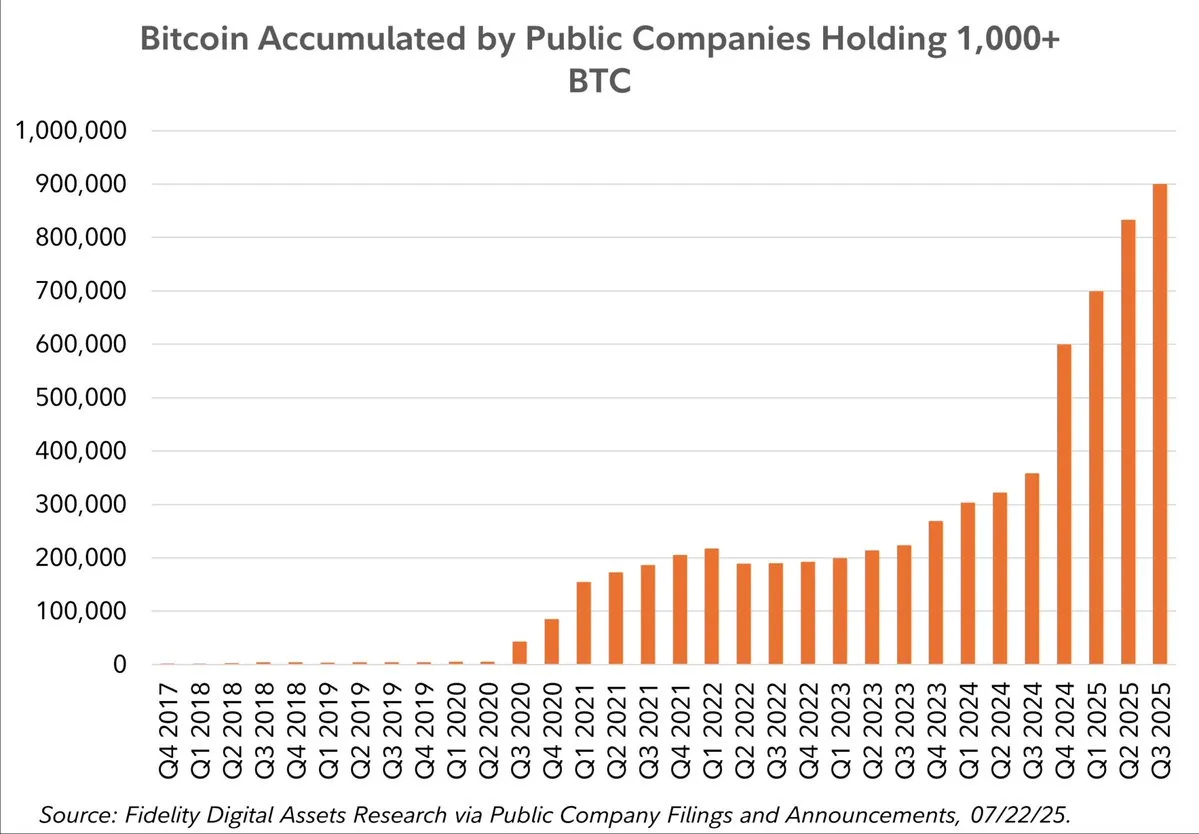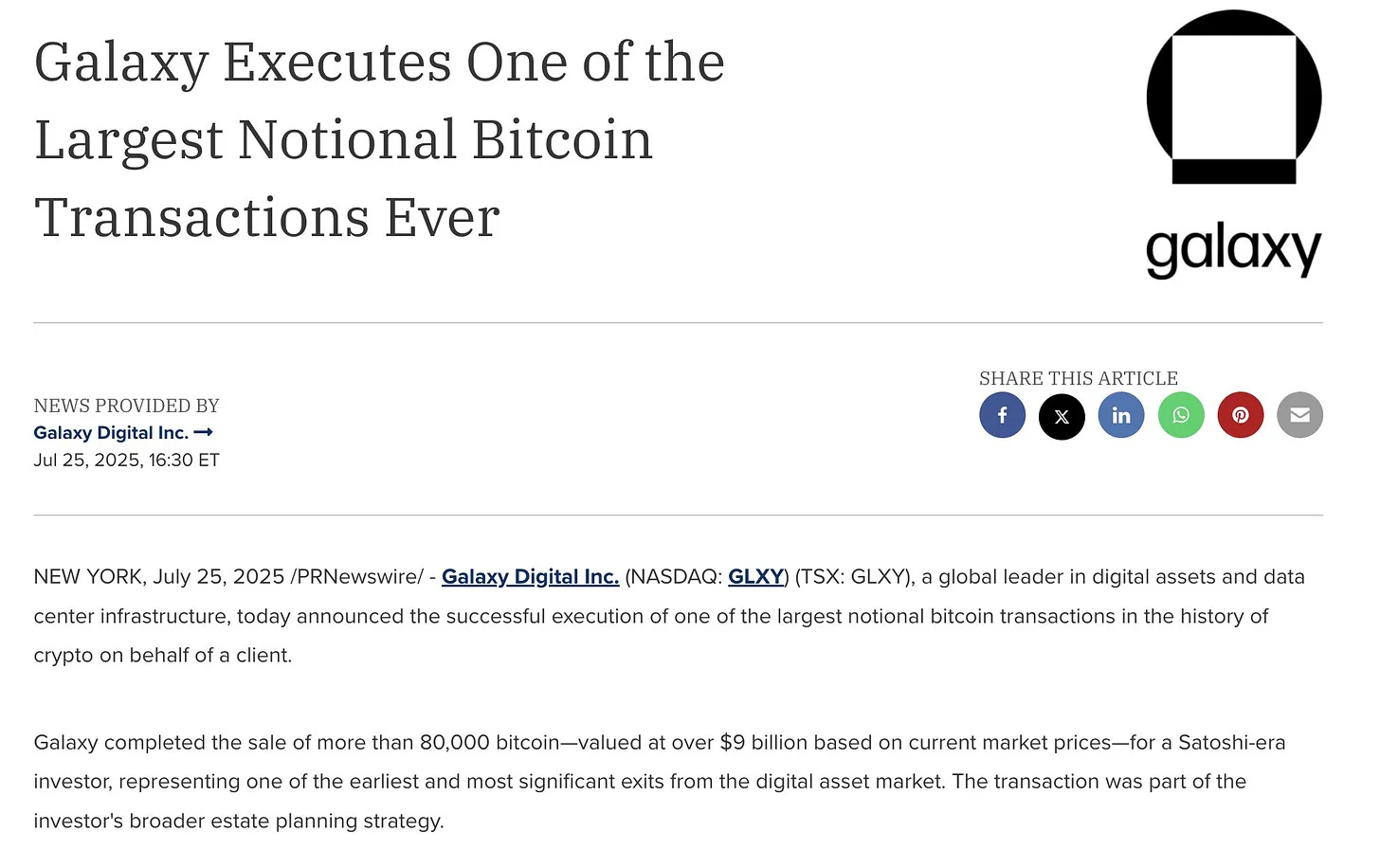The Rise of DATs - From Holding Bitcoin to Engineering Yields
ICO Mania, DeFi Summer, NFT Bubble, Gaming Hype and now back to DAT Summer and this time, TradFi’s the one buying our bags
TL;DR - ⚔️ DATs as Financial Institutions for Onchain Degens
So what are these companies becoming?
Not just treasuries - but programmable capital stacks
Not just balance sheets - but liquidity engines
Not just holders of crypto - but builders of crypto-native financial ecosystems
The corporate treasury of the 2020s will resemble less a traditional CFO’s office and more a real-time, blockchain-powered hedge fund with APIs, vaults, and validators.
They’ll route cross-border payments in stablecoins. Stake capital into ecosystems they help govern. Launch tokens, spin up SPVs, and perform macro hedges - all onchain.
Yesterday’s DATs held Bitcoin. Today’s run flywheels. Tomorrow’s will operate programmable capital machines.
They’ll issue stock to buy ETH. They’ll yield-farm with 9-figure balance sheets.
They’ll stake governance tokens to shape ecosystems and they’ll do it while quarterly reporting to Wall Street. They will blur the lines between treasury desk, venture fund, and protocol operator until the only thing left to do is print your own yield curve.
Welcome to the new era of capital formation born in crypto, wrapped in equity, and governed by both spreadsheets and smart contracts.
⸻
In the summer of corporate theatrics, spreadsheets are gathering dust and balance sheets are getting a digital makeover. Public companies from every corner of the globe are swapping vanilla capital plans for audacious crypto gambits and the storyline is nothing short of operatic.
⸻
“Bitcoin or Bust: The Hottest Corporate Strategy Since Stock Buybacks Met Meme Stocks”
Forget R&D sprees or flashy product launches. This season’s blockbuster isn’t a new widget or service - it’s raising equity, hard-wiring proceeds straight into crypto wallets, and letting the market do the rest. From French chipmakers to Texan e-bike startups, the cast of characters is delightfully eclectic. Here’s your front-row ticket to corporate crypto fever.
Phase I – The Age of Accumulation
“A degen cowboy once roamed the wilds of DeFi; now, Wall Street suits are riding into the same territory.”
What Happened:
Nearly 100 public companies have launched token-buying drives since June, raising over $43 billion - double the capital of all 2025’s U.S. IPOs.
MicroStrategy leads the tally with 607,770 BTC (≈$43 billion) on its books; Trump Media has plowed $2 billion into Bitcoin and derivatives.
SPACs have morphed into “crypto treasuries” (ReserveOne, Bitcoin Standard), offering retail investors a frontline seat.
Why It Matters:
This isn’t mere treasury management, it’s performance art with ticker symbols.
What began as fringe experimentation (hello, DeFi Summer 2021) is now mainstream finance in a tuxedo.
This chart vividly captures the institutional transformation unfolding in Bitcoin markets, a core pillar of the DAT Summer thesis. As of now, over 11.17% of Bitcoin’s market cap is held by institutions, with ETFs accounting for 6.52% and corporate treasuries 4.64%. What began in Phase One as a trickle of accumulation by bold corporate outliers has evolved into a full blown flywheel, especially visible post-2023, as ETF inflows surged and the price of BTC rallied. This shift reflects Phase Two’s “activation,” where Wall Street’s structured money via ETFs and capital raises is now driving liquidity, momentum, and narrative. The steep climbs in both ETF and treasury holdings aren’t just financial movements, they signal the institutionalisation of Bitcoin as a balance sheet asset and capital markets instrument. In short, this chart is the clearest proof yet: Bitcoin has become a corporate asset class.
Phase II – Engineering Yield from Dormant Reserves
“Buying Bitcoin is Phase One. The real game begins when you make it work.” - Steve Kurz, Galaxy Digital
Yield-Generation Tactics:
Staking & DeFi Liquidity: Companies are putting ETH and other tokens to work in DeFi protocols.
Structured Products & Options: Capital markets pros are layering options overlays and basis trades on crypto holdings.
Governance Playbooks: Voting in DAOs and staking governance tokens to influence protocol roadmaps.
Onchain Ecosystems: Building products that integrate corporate treasuries into real-world use cases.
The New Flywheel:
Public company buys tokens.
Token price rises.
Equity price surges on improved NAV.
Issuance of new shares or convertibles.
Proceeds get reallocated into more tokens.
Repeat toward “moon.”
Why It’s Different:
It’s capital markets meets crypto innovation, fully regulated and liquid.
Firms like Galaxy Digital have already helped raise $4 billion for crypto acquisitions complete with custody, risk management, and yield infrastructure.
Public companies now hold nearly 900,000 Bitcoin, up 35% in just one quarter.
Doubt, Disbelief and the Deja Vu of Disruption
Some of the smartest voices in the room are rolling their eyes:
“This is a bubble.”
“There’s no real ETH demand - why SBET?”
“These treasury firms are doomed if the flywheel breaks.”
Fair points. But remember: Price changes perspective. Time delivers conviction.
The same was said about DeFi tokens, NFTs, and even Bitcoin itself. If irrational exuberance creates real infrastructure, it doesn’t die - it evolves.
Phase III – The Premium Trap & Premium Prize
“Not everyone will command the same premium. Be early, not repetitive.” — Galaxy Digital
The Premium Phenomenon:
Treasury-heavy crypto firms trade at an average 73% premium to their on-chain holdings.
But saturation risks undercut margins—if you’re the tenth mover, the market yawns.
Regulatory & Market Curveballs:
GENIUS & CLARITY Acts: Spurring stablecoin competition; impacting Circle’s valuations ahead of Q2 earnings on August 12.
Ethereum as Corporate Strategy: SharpLink Gaming’s 360,807 ETH stash - 110% up this month signals a new onchain treasury model.
While Circle was slipping, Galaxy was gaining
Analysts called it a “comprehensive provider” for institutions outshining single-service firms like FalconX and NYDIG.
The GENIUS and CLARITY Acts are tailwinds for Galaxy’s stablecoin custody, issuance, and AI data center business.
More than two-thirds of Galaxy’s value now comes from infrastructure like their Helios facility (ex-Argo Blockchain), which now hosts CoreWeave’s AI and HPC operations.
DAT meets compute. It’s a vertical stack and Novogratz reports on August 5.
A critical driver behind this corporate crypto flywheel is the concept of mNAV - market-based Net Asset Value which measures the real-time value of a company’s crypto holdings relative to its equity market cap. When a public company accumulates a large crypto treasury, and the price of that asset rises, its mNAV improves dramatically. That delta between actual token value and perceived equity value becomes a tradeable narrative. Markets start pricing in upside not just from operations, but from potential future token appreciation - often at a premium. This leads to soaring equity valuations, allowing companies to issue more stock or convertibles at favorable terms, which they then recycle into buying more crypto. It’s a self-reinforcing loop: crypto treasury → higher mNAV → higher stock price → more capital → bigger treasury. In this cycle, mNAV isn’t just a valuation tool—it’s fuel for the next leg up.
Survival Playbook:
Be Strategic: Don’t just buy tokens—engineer bespoke financial products.
Stay Agile: Pivot as regulations and earnings seasons reshape incentives.
Build Infrastructure: Move beyond hoarding; launch APIs, vaults, and validators.
DAT Summer or Corporate Casino?
It started as a trickle - few adventurous firms testing crypto waters. Today, it’s a tidal wave of filings, treasury disclosures, and capital rotations. Welcome to DAT Summer (“Digital Asset Treasuries”), where public companies aren’t just accumulating digital gold—they’re weaponizing it.
Yesterday’s DATs held Bitcoin.
Today’s DATs run self-reinforcing flywheels.
Tomorrow’s DATs will be programmable capital machines: issuing stock to buy ETH, yield-farming nine-figure balance sheets, and shaping ecosystems via governance.
The question is no longer if corporations will hold crypto. It’s how much, what else, and what ingenious hustle they’ll conjure next. Whether this turns into a new financial architecture or the flashiest game of corporate roulette ever played remains to be seen. But one thing’s for sure: the casino floor is open, and the chips are digital.
It’s either a new financial architecture built on digital gold or the most stylish game of corporate roulette ever played. Either way, this summer on Wall Street feels less like a strategy session and more like a casino floor lit by laser eyes and FOMO.
We’ve entered an era where the question is no longer if public companies will hold Bitcoin - it’s how much, what else, and what the hell they plan to do with it.
It started as a trickle. A few public companies dipped their toes in the crypto waters. Now, it’s a torrent of filings, treasury disclosures and capital rotations.
Welcome to DAT Summer where listed companies aren’t just buying digital assets, they’re weaponizing them.





